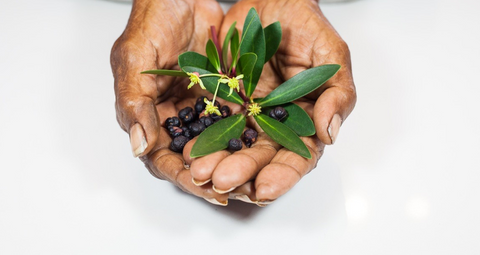

Provenance and the Plant




The biological activity of polygodial has been reported in the scientific literature to include antifungal and antimicrobial activities and antihyperalgesia which helps reduce pain. As mentioned above there is a history of Aboriginal people using the crushed Mountain pepper leaves or Pepperberries as a pain reliever for toothache and other ailments.
We can certainly attest to its active antifungal activity. A Cheesemaker we know wanted to flavour his Brie with Mountain Pepper. We explained that it had antifungal properties but he was not deterred and proceeded to make a small trial batch and none of the Bries developed the essential mould due to the activity of the Mountain Pepper- well we did tell him!
This means that adding Mountain Pepper to a dish may mean that it will keep longer due to the antifungal and antimicrobial elements. We like to rub our steaks with these delicious herbs and let them marinade for a day and not only is the flavour amazing but the Mountain Pepper keeps the meat fresh and seems to tenderise it also.
Mountain pepper has not only served Indigenous people as a flavouring agent for food over generations, but by and large, as a traditional medicine. Due to its high level of antioxidants, mountain pepper has been documented as a treatment for a variety of illnesses fromstomach aches and colic,to skin disorders and venereal diseases.
With potent antioxidants, four times more powerful than the beloved blueberry, mountain pepper’s health benefits are just as useful today as they have been over centuries. Antioxidants are linked to helping with diabetes and Alzheimer's disease, autoimmune and cardiovascular diseases, and more recent research highlights mountain pepper’s unique antiviral properties.
Dr Ian Cock, senior lecturer in Biomolecular and Physical Sciences at Griffith University told SBS recently, “The berry inhibits the growth of many pathogenic bacteria, protozoa and also has some limited antiviral activity. It also has good anti-cancer activity against multiple cancer cell lines.”
Also striking: the plant’s antibacterial properties. With antimicrobial components, mountain pepper has been found to inhibit the growth of food poisoning bacteria and prevent food spoilage, which Dr Cock's research demonstrates.
So you can use these herbs safely knowing they will help keep your food fresh, as well as imparting a fantastic flavour and adding very important antioxidants to your diet - a true Superfood Indeed!

Hello,
I’m looking for producers of Tasmania pepperberries in the Australian out back .
Can you help me .
Best regards